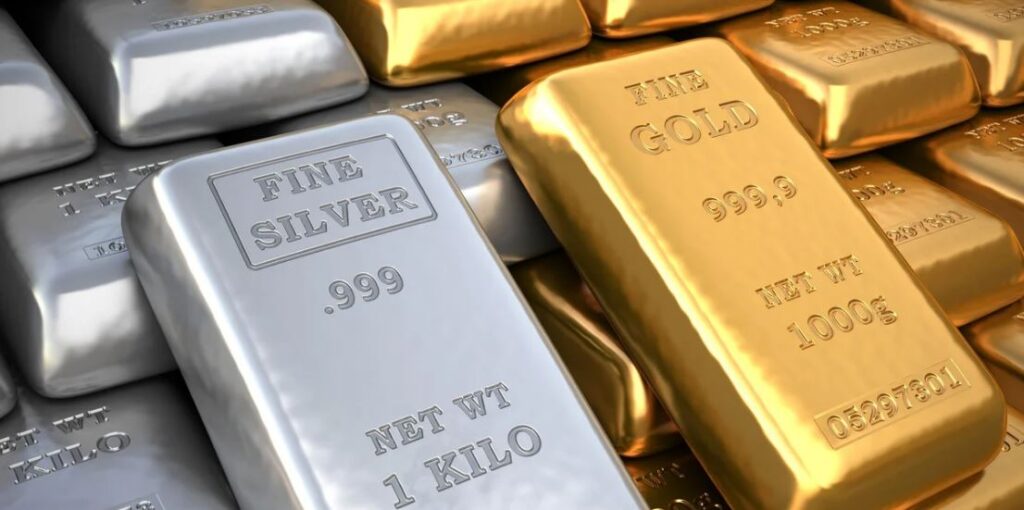
Gold and silver have been cherished for centuries, not only as symbols of wealth and beauty but also as reliable investment options. These precious metals play a crucial role in global economies, serve as country reserves, and offer opportunities for individual investors. Let’s explore their market conditions, historical trends, investment strategies, and future potential.
Market Condition of Gold and Silver
Gold and silver markets are influenced by factors such as inflation, geopolitical tensions, currency fluctuations, and industrial demand. Here’s a snapshot of their current conditions:
- Gold: Often referred to as a “safe haven,” gold is a preferred asset during economic uncertainty. Its demand is driven by central banks, jewelry, and investment products like ETFs.
- Silver: Known as the “poor man’s gold,” It has dual demand—industrial and investment. It is widely used in electronics, solar panels, and medical devices, making it sensitive to industrial growth.
Both metals have shown resilience in volatile markets, making them attractive options for diversification.
Importance as Country Reserves
Gold and silver are integral to a nation’s financial stability. Central banks hold significant reserves of gold to:
- Ensure Economic Security: Gold acts as a hedge against currency devaluation and inflation.
- Strengthen International Trade: Gold reserves enhance a country’s creditworthiness and ability to engage in global trade.
- Diversify Assets: Silver, though less common in reserves, is gaining traction due to its industrial importance.
For example, India and China are among the largest consumers of gold, while the United States and Germany hold substantial gold reserves to stabilize their economies.
Historical Data of their Prices
Gold and silver prices have fluctuated over the years, reflecting economic cycles and global events:
- Gold: In the 1970s, gold was priced around $35 per ounce. By 2020, it reached an all-time high of over $2,000 per ounce, driven by pandemic-induced uncertainty.
- Silver: Silver was priced at around $1.80 per ounce in the 1970s. It peaked at $49.45 per ounce in 1980 during the Hunt brothers’ silver cornering attempt.
The historical gold-to-silver ratio, which measures the relative value of gold to silver, has averaged around 50:1 over the last 30 years, though it has ranged from 15:1 to over 100:1 during extreme market conditions.
Investment Strategies
Investing in gold and silver requires careful planning and diversification. Here are some strategies:
- Physical Assets: Buy coins, bars, or jewelry for tangible ownership.
- Exchange-Traded Funds (ETFs): Invest in ETFs that track their prices for liquidity and convenience.
- Mining Stocks: Invest in companies that mine gold and silver for higher returns but with added risk.
- Futures and Options: Trade derivatives for short-term gains, but be cautious of market volatility.
A balanced approach combining physical assets and ETFs is ideal for long-term wealth preservation.
Current Price Ratio Difference
As of now, the gold-to-silver ratio stands at approximately 80:1, meaning it takes 80 ounces of silver to equal the value of one ounce of gold. This ratio is higher than the historical average, indicating silver may be undervalued compared to gold.
Future Price Predictions Based on Past Data
Based on historical trends and current market conditions, here’s an assumption for the next five years:
- Gold: With increasing demand from central banks and investors, gold prices could reach $2,500-$3,000 per ounce.
- Silver: Driven by industrial growth and investment, silver prices could rise to $40-$50 per ounce.
These predictions depend on factors like inflation, geopolitical stability, and technological advancements.
Conclusion
These two are timeless assets that offer stability, diversification, and growth potential. Whether held as country reserves or individual investments, their importance cannot be overstated. By understanding their market dynamics, historical trends, and investment strategies, you can make informed decisions to secure your financial future.
Thank you for being a part of this learning journey. Please share if you like it !
Gyaanology Team
Leave a Reply